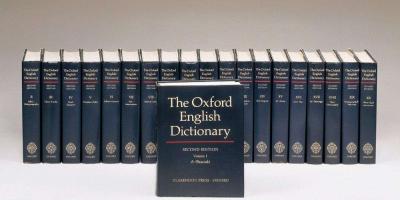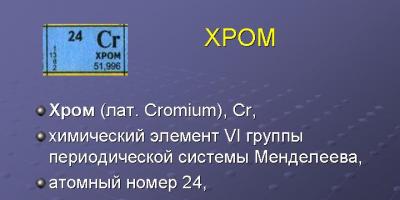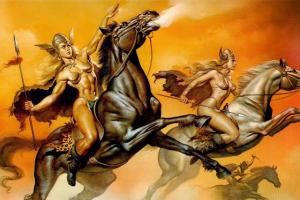The Latin language, or Latin, is one of the oldest Indo-European languages that had writing. It appeared among the peoples of ancient Italy around the second millennium BC, displaced other languages spoken by the Italians, and became the main one in the western Mediterranean. The language reached its greatest flourishing in the first century BC, with the development of the so-called classical Latin - the literary language in which Cicero, Horace, Virgil, and Ovid wrote. Latin was improved simultaneously with the development of Rome and its emergence as the largest state on the Mediterranean.
Further, this language survived the periods of Postclassic and Late Latin, in which similarities with the new Romance languages were already outlined. In the 4th century, medieval Latin was formed, which was significantly influenced by Christianity. The Bible was translated into Latin, and since then it has become a sacred language. All theological works were written on it. Figures of the Renaissance also used Latin for their works: Leonardo da Vinci, Petrarch, Boccaccio wrote in it.
Latin is a dead language
Gradually, the Latin language disappeared from people's speech; in the Middle Ages, local dialects were used more and more often as an oral language, but Latin lived on in religious texts, scientific treatises, biographies and other works. The rules for pronunciation of sounds were forgotten, the grammar changed a little, but the Latin language lived on.
Officially, it can be called a dead language since the 6th century, after the fall of the Roman Empire, when barbarian states began to flourish and Latin gradually fell out of everyday use. Linguists call a dead language a language that does not exist in everyday life, is not used in live oral communication, but exists in the form of written monuments. If there is not a single person who speaks it like a native speaker, then the language is considered dead.
But Latin is a special dead language, which can be called such with a stretch. The fact is that it is still actively used in many areas of life. Latin is widely used in medicine and biology, as well as in other sciences, but even in everyday life people still use some
Latin or Latin was the language of the Roman Empire, the language of the Roman Catholic service, and today is the language of the Vatican State of Italy. Since there are no living native speakers of Latin, Latin is used as a second language. Latin spoken: in Vatican City Region: Italian Peninsula. Total number of speakers: none. Classification: no classification. Genetic classification: Indo-European family. Official language: Vatican State. Regulated by: Roman Catholic Church.
History of the Latin language
Latin was originally spoken in the area located
near Rome, called Latium. It gained importance, becoming the official language of the Roman Empire. All Romance languages originated from Latin, and many words with Latin roots can be found in many modern languages, for example in Russian, English, German, French.
It is said that 80% of scientific words in English come from Latin (mostly via French). Moreover, in Western countries, Latin has been the scientific language (lingua franca), used for scientific and political purposes, for over a thousand years. As a result, in the 18th century Latin was replaced by French, and in the 19th century by English. Ecclesiastical Latin remains the official language of the Roman Catholic Church to this day, making it the official state language of the Vatican. The Roman Catholic Church used Latin as its primary language for services until the Second Vatican Council in the 1960s. Latin is still used (with the active participation of Greek roots) as a language for classifying the scientific names of living organisms.
After the collapse of the Roman Empire, Latin gave rise to various Romance languages. For centuries, these languages were considered only spoken, while Latin was the written language. (For example, Latin was the official language of Portugal until 1296, when it was replaced by Portuguese.)
The Romance languages arose from the vernacular (vulgar) Latin, which was used everywhere, and which was formed from the old colloquial speech that gave rise to the official classical Latin. Latin and Romance languages differ, for example, in that in Romance languages the stress on a certain syllable is significant, whereas in Latin the length of the vowels is characteristic. For Italian, the characteristic feature is the length of consonants and stress, in Spanish - only stress, and in French even stress is fixed.
Another important distinguishing feature between the Romance and Latin languages is, with the exception of Romanian, that the Romance languages have lost case endings in most words except for some pronouns. The Romanian language still retains five cases (although there is no longer an ablative case).
Latin today

Latin courses offered today at universities and colleges are aimed mainly at teaching the translation of Latin texts into modern languages, and not at using it as a means of communication. Therefore, the emphasis is on reading well, while speaking and listening are only superficially addressed. However, there is a Living Latin movement whose proponents believe that Latin can or should be taught in the same way as modern "living" languages: that is, teaching spoken language and writing. One of the interesting aspects of this approach is the theoretical idea of how certain sounds were pronounced in ancient times. Without understanding what the pronunciation should be, it is difficult to determine the styles that are commonly used in Latin poetry. Institutions that offer guides to Living Latin are the Vatican and the University of Kentucky.
Latin dialects
As a living language, Latin underwent continuous evolution and was open to the influence of other languages. First of all, this statement was true for colloquial speech, which was used by an illiterate population, which already in ancient times borrowed many terms from Greek, Celtic, and later from Germanic languages. It was a language called sermo vulgaris, which spread throughout the Romanized parts of Western Europe, such as Gaul, where it apparently coexisted with other languages (Celtic). The Celtic language probably disappeared from northern Gaul by the fifth century, and was later reintroduced here by people who fled to the Continent from the Angles, Saxons and Jutes who came to conquer the British Isles. In regions of the Northeastern part of the Empire that were less Romanized, as well as outside the borders of the Roman Empire, Germanic languages were spoken. These were languages such as Frisian, Saxon, as well as West Germanic languages and dialects.
Germanic languages (Gothic)
During the migrations, the languages of the invading tribes brought strong linguistic changes to the territories of the late Roman Empire. Gothic, the language of the Visigoths and Ostrogoths, became especially widespread. The Gothic bishop Wulfilas (or Ulfilas, 311 - 382) was responsible for preparing a translation of the Bible into Gothic, which remained in circulation among the Aryan Christians, considered heretics by the Roman Church. This Bible was used for several centuries, mainly in Visigothic Spain. As a spoken language, Gothic disappeared between the seventh and ninth centuries, but Wulfila's translation of the Bible (Gothic Bible) still remains the first major document of Germanic literature.
Dialects in Gaul
In Gaul, Latin sermo vulgaris combined elements from several languages and became known as Romance Latin. It was so firmly rooted that the warring Germanic tribes adopted it as their own. Proof of this is the fact that, starting from the sixth century, sermons read in the church councils of France were translated into this language. By the eighth century, Charlemagne prescribed that sermons be read in the vernacular, while the rest of the service be conducted in Latin. However, even in Gaul the same language used in different areas was not homogeneous. Along with individual languages, there were various dialects, the main of which was Provençal. In general terms, starting from the early Middle Ages, two groups of dialects arose in the territories conventionally divided by the Loire River. In the south, Languedoc (langue d'oc), which had more similar features to Latin, and Languedoille (langue d'oil) in the north, which was heavily influenced by other languages. The terms for the two dialect groups indicate the manner in which the word "yes" is pronounced in each group.
Dialects of Western Europe
A similar development took place in the German-speaking areas of Western Europe between approximately 500 and 700. AD in the north. Here a group of dialects emerged that are collectively known as the Low German languages, while the southern dialects are correspondingly called High German. As in France, after a long time the dominant influence of one group over the other began, in the fourteenth century in France and in the sixteenth in Germany.
Evolution of ancient writing
Ancient literature and science, as well as various Christian texts, are preserved in the form of manuscripts (i.e. manuscripts). The style of the fonts was according to the traditions of Roman writing, or the forms of writing that arose subsequently. However, from the seventh century onwards, more rigorous "national" writing techniques began to develop in various parts of Europe. The so-called "insular script", used in Ireland and Scotland from the seventh century, differed significantly from the Visigothic script common in Spain and from the Beneventan script, which was common in southern Italy. In the territories of the Frankish state, Merovingian types of script, which were used in the seventh and eighth centuries, were replaced during the reign of Charlemagne by a new script, partly influenced by the Romanesque style of writing known as Carolingian minuscule. Fine manuscripts were often decorated with illustrations called miniatures or elaborate, ornamental lettering, such as the Lindisfarne Gospel of 698 and the Kell Book of the mid-8th century.
ImportantLatinwords
Months
January: Ianus (ancient Roman god)
February: Februaris (ancient Roman festival of purification)
March: Mars (ancient Roman god)
April: Aprilis (opening, beginning of the season)
May: Maia (ancient Roman goddess)
June: Iuno (ancient Roman goddess)
July: Iulius Caesar (Roman Emperor)
August: Augustus (Roman Emperor)
September: September: 7th month
October: October: 8th month
November: November: 9th month
December: December: 10th month
Days of the week
Sunday: Solis dies (day of the sun)
Monday: Lunae dies (day of the moon)
Tuesday: Martis dies (Mars day)
Wednesday: Mercurii dies (Mercury day)
Thursday: Jovis dies (day of Jupiter)
Friday: Veneris dies (Venus day)
Saturday: Saturni dies (day of Saturn)
Colors
Albi/Albus: white
Aurei/Aurantiacus: orange
Carnei: flesh color
Flavi: yellow
Fulvus: bright yellow
Lutei Niger/Nigra: black
Purpurei: purple
Rosei/Roseu: pink
Rubra/Rubri: red
Viride/Viridi: green
Family
filiam: daughter
filium: son
mater: mother
materfamilias: (female) head of the family
nepos: grandson. Also means "nephew" in some records.
neptis: granddaughter. Also means "niece" in some records.
uxor (ux, vx): wife
Listen to the Latin speech (subtitles in English):
And also: Christian prayer “Creed” in Latin:
Prayer Pater noster in Latin
PATER NOSTER, qui es in caelis, sanctificetur nomen tuum. Adveniat regnum tuum. Fiat voluntas tua, sicut in caelo et in terra. Panem nostrum quotidianum da nobis hodie, et dimitte nobis debita nostra sicut et nos dimittimus debitoribus nostris. Et ne nos inducas in tentationem, sed libera nos a malo.
Circulus Latinus Panormitanus is one of the best sites for modern Latin.
Latin: Catchphrases, Aphorisms and Expressions is an authoritative collection of aphorisms, catchphrases and sayings in Latin.
Latin language(self-name - Lingua latina), or Latin- the language of the Latin-Faliscan branch of the Italic languages of the Indo-European language family. Today it is the only active, although limitedly used (not spoken) Italian language.
Latin is one of the most ancient written Indo-European languages.
Encyclopedic YouTube
1 / 5
✪ LATIN LANGUAGE - Lesson 1: Alphabet and reading rules
✪ LATIN LANGUAGE - Lesson 2: I declension of nouns
✪ Latin language. Lesson 1. Language and writing
✪ Latin language. Where can Latin come in handy today?
✪ Latin and its use in the modern world
Subtitles
Writing
|
|
- The letters C and K both represent /k/. In archaic inscriptions, C is usually used before I and E, while K is used before A. However, in classical times, the use of K was limited to a very small list of native Latin words; in Greek borrowings, kappa (Κκ) is always rendered with the letter C. The letter Q allows one to distinguish between minimal pairs with /k/ and /kʷ/, for example cui/kui/ and qui/kʷiː/.
- In early Latin, C stood for two different phonemes: /k/ and /g/. Later, a separate letter G was introduced, but the spelling C remained in abbreviations for a number of ancient Roman names, for example Gāius(Gai) was written in abbreviation C., A Gnaeus(Gney) like Cn.
- In classical Latin, the letters I and V (name: ū) stood for both the vowels /i/ and /u/ and the consonants (more precisely, semivowels) /j/ and /w/. At the end of the Middle Ages, the distinction Ii/Jj and Uu/Vv was introduced, which is still optional when publishing Latin texts. Often only Ii, Uu, Vv are used, sometimes Ii and Vu.
- The letters Y and Z were introduced in the classical era to write words of Greek origin; the letter W was introduced in the Middle Ages to write words of Germanic origin.
- The semivowel /j/ was regularly doubled between vowels, but this was not shown in writing. Before the vowel I, the semivowel I was not written at all, for example /ˈrejjikit/ ‘threw back’ was more often written reicit, but not reiicit.
- The case distinction (uppercase/lowercase) was introduced in the Middle Ages.
In the historical development of the Latin language there are several stages, characteristic from the point of view of its internal evolution and interaction with other languages.
Archaic Latin (Old Latin language)
The appearance of Latin as a language dates back to the middle of the 2nd millennium BC. e. At the beginning of the 1st millennium BC. e. Latin was spoken by the population of the small region of Latium (lat. Latium), located in the west of the middle part of the Apennine Peninsula, along the lower reaches of the Tiber. The tribe that inhabited Latium was called Latins (lat. Latini), its language is Latin. The center of this area was the city of Rome (lat. Roma), by whose name the Italic tribes united around him began to call themselves Romans (lat. Romani).
The earliest written monuments of the Latin language presumably date back to the end of the 6th - beginning of the 5th century BC. e. This is a dedicatory inscription found in 1978 from the ancient city of Satrica (50 km south of Rome), dating back to the last decade of the 6th century BC. e., and a fragment of a sacred inscription on a fragment of black stone found in 1899 during excavations of the Roman forum, dating back to approximately 500 BC. e. The ancient monuments of archaic Latin also include quite numerous tombstone inscriptions and official documents from the mid-3rd - early 2nd centuries BC. e., of which the best known are the epitaphs of the Roman political figures Scipios and the text of the Senate resolution on the sanctuaries of the god Bacchus.
The largest representative of the archaic period in the field of literary language is the ancient Roman comedian Plautus (c. 245-184 BC), from whom 20 comedies have survived to this day in their entirety and one in fragments. However, it should be noted that the vocabulary of Plautus’s comedies and the phonetic structure of his language are already significantly approaching the norms of classical Latin of the 1st century BC. e. - beginning of the 1st century AD e.
Classical Latin
Classical Latin means a literary language that reached its greatest expressiveness and syntactic harmony in the prose works of Cicero (106-43 BC) and Caesar (100-44 BC) and in the poetic works of Virgil (70-19 BC . e.), Horace (65-8 BC) and Ovid (43 BC - 18 AD).
The period of formation and flourishing of the classical Latin language was associated with the transformation of Rome into the largest state in the Mediterranean, which subjugated vast territories in the west and southeast of Europe, northern Africa and Asia Minor. In the eastern provinces of the Roman state (Greece, Asia Minor and the northern coast of Africa), where the Greek language and highly developed Greek culture were widespread at the time of their conquest by the Romans, the Latin language did not become widespread. Things were different in the western Mediterranean.
By the end of the 2nd century BC. e. The Latin language dominates not only throughout Italy, but also, as the official state language, penetrates into the regions of the Iberian Peninsula and what is now southern France conquered by the Romans. Through Roman soldiers and traders, the Latin language in its spoken form found access to the masses of the local population, being one of the most effective means of Romanizing the conquered territories. At the same time, the closest neighbors of the Romans are most actively Romanized - the Celts, who lived in Gaul (the territory of modern France, Belgium, partly the Netherlands and Switzerland). The Roman conquest of Gaul began in the second half of the 2nd century BC. e. and was completed at the very end of the 50s BC. e. as a result of prolonged military operations under the command of Julius Caesar (Gallic Wars 58-51 BC). At the same time, Roman troops came into close contact with the Germanic tribes that lived in vast areas east of the Rhine. Caesar also makes two trips to Britain, but these short-term expeditions (in 55-54 BC) did not have serious consequences for relations between the Romans and local Celts. Only 100 years later, in 43 AD. BC, Britain was conquered by Roman troops, who remained there until 407 AD. e. Thus, for about five centuries, until the fall of the Roman Empire in 476 AD. e., the tribes that inhabited Gaul and Britain, as well as the Germans, experienced the strongest influence of the Latin language.
Postclassical Latin
It is customary to distinguish the language of Roman fiction from classical Latin, the so-called. the post-classical (post-classical, late antique) period, chronologically coinciding with the first two centuries of the new era (the so-called era of the early empire). Indeed, the language of prose writers and poets of this time (Seneca, Tacitus, Juvenal, Martial, Apuleius) is distinguished by significant originality in the choice of stylistic means; but since the norms of the grammatical structure of the Latin language developed over the previous centuries are not violated, the indicated division of the Latin language into classical and post-classical has more literary than linguistic significance.
Late Latin
The so-called period stands out as a separate period in the history of the Latin language. Late Latin, the chronological boundaries of which are the III-VI centuries - the era of the late empire and the emergence, after its fall, of barbarian states. In the works of writers of this time - mainly historians and Christian theologians - many morphological and syntactic phenomena already found their place, preparing the transition to new Romance languages.
Medieval Latin
Medieval, or Christianized Latin is primarily liturgical (liturgical) texts - hymns, chants, prayers. At the end of the 4th century, Jerome of Stridon translated the entire Bible into Latin. This translation, known as the Vulgate, was recognized as equivalent to the original at the Catholic Council of Trent in the 16th century. Since then, Latin, along with Hebrew and Ancient Greek, has been considered one of the sacred languages of the Bible.
Latin in Modern Times
Influence on other languages
The Latin language in its folk (colloquial) variety - the so-called vulgar Latin (meaning “folk”) - was the basis language for new national languages, united under the general name Romance. These include: the Italian language, which arose on the Apennine Peninsula as a result of a historical change in the Latin language; French and Occitan languages, which developed in the former Gaul; Spanish, Catalan, Portuguese, Galician and Miranda - in the Iberian Peninsula; Romansh - in the territory of the Roman colony of Raetia (in part of present-day Switzerland and in northeastern Italy); Romanian - in the territory of the Roman province of Dacia (modern Romania), Moldavian and some other Eastern Romance languages of the Balkan Peninsula. Of particular note is the Sardinian language, as the closest to classical Latin of all modern Romance languages.
Despite the common origin of the Romance languages, there are currently significant differences between them. This is explained by the fact that the Latin language penetrated into the conquered territories over a number of centuries, during which it itself, as the base language, was somewhat modified and entered into complex interaction with local tribal languages and dialects. A certain imprint on the emerging related Romance languages was also left by the difference in the historical fate of the territories in which they were formed over a long period of time.
Nevertheless, all Romance languages retain Latin features in their vocabulary, as well as, although to a much lesser extent, in morphology. For example, the verbal system of the French language represents a further development of verb forms already outlined in folk Latin. During the formation of the French literary language, it was strongly influenced by Latin syntax, under the influence of which the rules of agreement and sequence of tenses, isolated participial constructions, and infinitive phrases were formed in French grammar.
Attempts by the Romans to subjugate the Germanic tribes, which were made repeatedly at the turn of the 1st century BC. e. and 1st century AD e., were not successful, but economic ties between the Romans and the Germans existed for a long time; they went primarily through Roman garrison colonies located along the Rhine and Danube. The names of German cities remind us of this: Cologne (German. Köln, from lat. colonia- “settlement”), Koblenz (German) Koblenz, from lat. confluentes- lit. “flocking”, since Koblenz is located at the confluence of the Moselle and the Rhine), Regensburg (German. Regensburg, from lat. regina castra), Vienna (from lat. vindobona) and etc.
In Britain, the oldest traces of the Latin language are the names of cities with the compound -chester, -caster or -castle from lat. castra- "military camp" and castellum- “strengthening”, foss- from lat. fossa- "ditch" col(n) from lat. colonia- “settlement”: Manchester (English) Manchester), Lancaster (eng. Lancaster), Newcastle (English) Newcastle), Fosbrook (eng. Fossbrook), Lincoln (English) Lincoln), Colchester (English) Colchester). The conquest of Britain in the 5th-6th centuries by the Germanic tribes of the Angles, Saxons and Jutes increased the number of Latin borrowings adopted by the British tribes, at the expense of words already adopted by the Germans from the Romans.
The importance of the Latin language for the gradual and long-term formation of new Western European languages continued even after the fall of the Western Roman Empire (traditional date - 476). Latin continued to be the language of state and school in the early feudal Frankish kingdom, formed at the end of the 5th century and absorbing much of the territory of the Western Roman Empire; The Frankish state, which became an empire (Charlemagne took the title of emperor in 800), disintegrated in 843 into independent states of Western Europe - the kingdoms of Italy, France and Germany. The absence of national literary languages in these states for several centuries forced them to resort to the Latin language in relations between them. Throughout the Middle Ages and beyond, Latin was the language of the Catholic Church. At the same time, Latin was the language of science and university teaching, and the main subject of school teaching. Finally, Latin was the language of jurisprudence, and even in those countries where already in the Middle Ages the transition of legislation to national languages took place (as, for example, in France), the study of Roman law and its reception were the most important component of jurisprudence. Hence the widespread penetration of Latin vocabulary into modern European languages, primarily as scientific, theological, legal and generally abstract terminology.
In Russia, until the 18th century, Church Slavonic and (to a lesser extent) Greek were used as a source of terminology; however, starting from the time of Peter I, an increased penetration of Latin vocabulary into the Russian language began, to a lesser extent directly, and more through modern European languages. It should be noted, however, that in the Old Russian language itself there are several very early borrowings from Latin, partly directly, partly through Greek (“bath”, “chamber”, “mint”, “cherry”).
Latin is one of the oldest written languages of the Indo-European system. Knowledge of ancient languages helps to take a more conscious approach to understanding language as a system, to understand the main Indo-European linguistic categories, and makes it possible to better navigate general linguistic problems.
The role of the Latin language as the language of a people with a large and rich cultural tradition in the history of European and world culture is exceptionally great. Ancient culture is, in a sense, universal. It harmoniously integrates into many other cultures, becoming one of the components, or even the basis of these cultures. Ancient mythology, philosophy, literature, medicine, jurisprudence - this list goes on and on - became the foundation on which today's science and the worldview of an educated person are built.
The Latin language claims to be universal. The languages of the world are replete with Latinisms, any scientific terminology is built on the basis of Latin-Greek term elements, Latin aphorisms decorate the speech of politicians, journalists, and writers.
The importance of the Latin language for modern culture
The Latin language is about 3000 years old. The name itself comes from the name of the tribe of Latins who lived at that time in Latium. This is a plain in the center of the Apennine Peninsula with the main city of Rome (Roma), founded in the 8th century. BC. The Latin language belongs to the Italic branch of the vast family of Indo-European languages (Ancient Greek, Modern Greek; Iranian, Germanic, Baltic, Slavic languages, etc.).
Ancient monuments in Latin have reached us from the 6th century BC. And by the 1st century BC. The literary language of the ancient Romans reached its peak. Classical, or “golden” Latin, is represented in the works of Caesar, Cicero, Horace, and Lucretius.
The Roman Republic, later an empire, pursuing a broad policy of conquest, conquered Macedonia and Greece, Syria and Egypt, the western region of the Mediterranean Sea, Gaul, Britain, North Africa and a number of other lands, making Latin the main national language for a long time. But the culture of Hellas (Ancient Greece) had a huge influence on the Romans. Simultaneously with the colloquial one, scientific terminology is being developed in Latin, enriched with terms of Greek origin. The spoken language (sermo vulgaris) is separated from the literary one in the 1st century AD. its unshakable spelling rules are established - spelling.
In the 6th century AD The Roman Empire, under the pressure of barbarian raids, fell apart into separate independent states. Latin has finally lost its colloquial meaning. Mixing with the languages of other nationalities, folk Latin gave rise to new languages. This is how the Romance group of living languages arose: Italian, Spanish, Portuguese, French, Romanian, Moldavian. But even in the Middle Ages, Latin remained the language of science and literature. In all Western European universities and schools, teaching was conducted in Latin. And in the XVII-XVIII centuries. Latin continues to be the international language of science: diplomats draw up treaties, scientists inscribe geographical maps. I. Newton, C. Linnaeus, M. V. Lomonosov write their treatises in Latin.
During the period of postclassical (“silver”) Latin, phonetic, morphological and orthographic norms were finally formed. The period of late Latin (2nd-6th centuries) is characterized by a gap between the written and vernacular languages: the regional differentiation of folk Latin accelerated; The formation of modern Romance languages began on its basis, which finally became isolated by the 9th century.
Although Latin fell into disuse as a living spoken language after the 6th century, when the Western Roman Empire collapsed, its role in the history of medieval Western Europe, where it remained for a long time the only written language, turns out to be extremely important. It is no coincidence that all Western European languages, except Greek, use an alphabet based on Latin. Until the end of the 17th century, it continued to serve as the main language of European science, diplomacy and the church. Latin was written at the court of Charlemagne and in the papal office, and was used by St. Thomas Aquinas and Petrarch, Erasmus of Rotterdam and Copernicus, Leibniz and Spinoza, it sounded in the oldest European universities, uniting people from different countries. Only in the most recent period of European history does this unifying cultural role gradually shift first to French and then to English. In the countries of the Romanesque speech, the Catholic Church abandoned divine services in Latin only in the twentieth century, but they are preserved, for example, by Catholics of the Gallican rite.
The historical role of the Latin language as the international language of science and fiction significantly distinguishes it from the numerous artificial languages proposed for international communication - both from those that received at least limited distribution, and from the incomparably larger part of them, which remained stillborn projects. Being the official language of the multi-tribal Roman Empire, which occupied by the 3rd century. AD a vast territory around the Mediterranean Sea, Latin turned out to be the only cultural language in its western part. It retained this significance even after the fall of the Western Roman Empire in the 5th century. under the pressure of barbarian tribes. Until the XII - XIII centuries. Latin remained the only literary language, an instrument of artistic creativity and scientific thought, but above all, the language of the Catholic religion, which formed the basis of medieval ideology.
In the oral speech of numerous Romanized tribes, the Latin language changed so much that already in the 3rd - 4th centuries. it developed into a number of local dialects, collectively called Vulgar Latin. Subsequently, these dialects laid the foundation for modern Romance languages. The written Latin language, despite all the diversity of areas in which it was used, did not lose its unity: mastery of it opened up for its speakers the possibility of mutual live communication both in Romanized countries and beyond their borders.
Latin was not a dead language, and Latin literature was not dead literature. They not only wrote in Latin, but also spoke it: it was a colloquial language that united the few educated people of that time: when a Swabian boy and a Saxon boy met in a monastery school, and a Spanish youth and a Pole youth met at the University of Paris, then In order to understand each other, they had to speak Latin. And not only treatises and lives were written in Latin, but also accusatory sermons, meaningful historical works, and inspired poems. Thus, for many centuries before the Renaissance, the Latin language flawlessly performed the functions of an international language, and not only in science, but also in poetry.
Although the Latin language has lost the importance of the international language of scientists of any specialty, which belonged to it back in the 18th century, in a number of scientific fields its position remains unshakable at the present time. First of all, it is the language of natural science taxonomy dating back to Linnaeus, as well as anatomical, medical and pharmacological nomenclature. At the same time, Latin and Latinized Greek vocabulary serves as the main source of replenishment of the continuously and progressively growing terminology in all areas of science and technology.
Today we call Latin a “dead” language because it has ceased to be the language of everyday communication among people. But in speech we encounter Latinisms at every step. And since the Russian and Latin languages are “cognates”, there is a similarity between many Russian words and Latin ones: new - novus, house - domus, mother - mater, see - vidēre, no - nullus. In addition, the system of word changes (declension, conjugation) in both Russian and Latin languages is the same.
Latin proverbs, sayings, sayings enliven our colloquial speech: Alma Mater. Quinta essence. Post scriptum. Ab ovo. Perpetuum mobile. Homo sapiens and others. Most Latin aphorisms, sayings and proverbs have long become catchphrases. They are used in scientific and fiction literature, and in public speaking.
In the international vocabulary of many languages of the world, especially European ones, Latinisms occupy a significant place: institute, faculty, rector, dean, professor, doctor, associate professor, assistant, graduate student, laboratory assistant, preparator, student, dissertation candidate, audience, communication, credit, discredit, decree, credo, course, curator, supervise, prosecutor, cadet, ply, competitor, competition, excursion, excursionist, degree, gradation, degradation, ingredient, aggression, congress, progress, regression, lawyer, legal adviser, consultation, intelligence, intellectual, colleague, collegium, collection, petition, appetite, competence, rehearsal, tutor, conservator, conservatory, preserve, observatory, reserve, reservation, reservoir, valence, valerian, currency, devaluation, disabled, prevail, equivalent, statue, monument, ornament, style, illustration, etc.
Only over the past few years, on the pages of newspapers and magazines, in the speeches of deputies, new words of Latin origin for our political life have appeared: pluralism (pluralis - “multiple”), conversion (conversio - “transformation”, “change”), consensus (consensus - “consent”, “agreement”), sponsor (sponsor – “trustee”), rotation (rotatio – “circular motion”), etc.
Nowadays, Latin and Greek are the building blocks for creating new and improving existing terms. In contrast to everyday concepts, the term denotes a briefly and succinctly defined concept used in science, technology, and art. Thanks to the Latin language, scientific terminology acquires an international character.
The Latin language is closely related to jurisprudence due to the fact that it is called the “mother language” for all branches of law. Suffice it to say that practical terminology is present in most legal categories, constructions and formulas. First of all, this concerns Roman law, in the system of which, in fact, the main branches of modern law originated. For several centuries, Latin, based on the vocabulary of Roman law, served as the working language of jurists and jurists. Diplomats also preferred to speak Latin. Many terms of diplomacy and international law are borrowed from the Latin language.
In addition, the study of Latin by a future lawyer still has a certain applied significance. The heritage of Roman jurisprudence has been partially borrowed by modern legal science in the form of stable phraseological units of the Latin language, conveying certain basic concepts in a concise form. These phrases are used in legal literature without translation, and their incorrect understanding can lead to misinterpretation of a particular legal text.
Latin is necessary when studying modern Romance languages, since the history of these languages, many phonetic and grammatical phenomena, and features of vocabulary can only be understood on the basis of knowledge of Latin. The above, although to a lesser extent, also applies to those who study Germanic languages (English, German), on whose grammatical and, especially, lexical system the Latin language also had a great influence.
Alphabet. Reading rules. Syllable division, number of syllables and stress rules


Syllable and syllable division
Syllables in Latin can be open And closed. A syllable ending in a vowel is open; a syllable ending in a consonant or group of consonants is closed. The syllable division passes: 1. Between two vowels: de-us [d "e-us] God; 2. Between a vowel or diphthong and a single consonant: lu-pus [l "yu-pus] wolf, cau-sa [to "au-za] cause; 3. Before the group muta cum liquida: pa-tri-a [p"a-tri-a] homeland, tem-plum [t "em-plum] temple; 4. Within a group of consonants: a) between two consonants: lec-ti-o [l "ek-tsi-o] reading; b) in a group of three consonants - usually before the last consonant (except for combinations with the group muta cum liquida!): sanc-tus [s "aŋk-tus] sacred, BUT doc-tri-na [doc-tr "i-na] doctrine.
Number of syllables 1. All syllables containing diphthongs are long by nature. For example, in the word causa [k "auza] there is a reason, the syllable cau is long. 2. All closed syllables are long in position, since their vowel comes before a group of consonants. For example, in the word ma-gis-ter [ma-g" is-ter] teacher, the syllable gis is long. An exception to this rule is when the vowel of a syllable comes before the combination muta cum liquida. In prose, such a syllable is considered short: te-nĕ-brae [t"e-ne-bre] darkness, shadow, and in poetry such a syllable can be long. 3. An open syllable is short in position if it is followed by a syllable that begins from a vowel sound. For example, in the word ra-tĭ-o [p"a-tsi-o]mind, the syllable tĭ is short. 4. An open syllable followed by a syllable beginning with a consonant is either long or short in nature. For example, in the word for-tū-na [for-t"u-na] fate, the syllable tū is long in nature; in the word fe-mĭ-na [f"e-mi-na] woman, the syllable mĭ is short in nature. To find out the number of vowels in such cases, you should consult a dictionary










